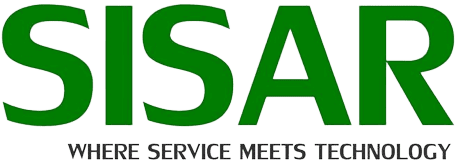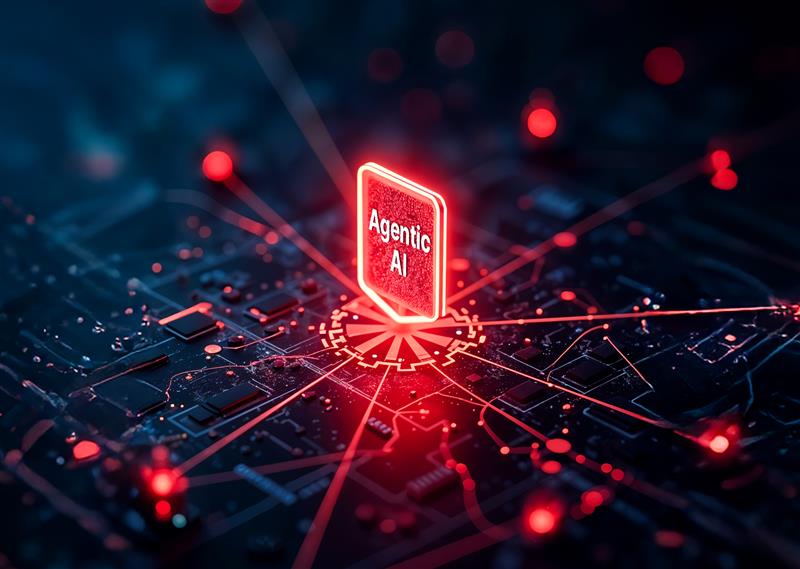Agentic AI has arrived—and it’s no longer just a helpful assistant. It’s operating with growing independence, initiating and executing actions without waiting for instructions. From processing transactions to analyzing real-time data and orchestrating workflows, these intelligent systems act with intent—not just instruction.
This shift is driving transformative innovation. Yet as adoption deepens, a sobering truth remains: many organizations are still unprepared for the complex risks these autonomous systems bring with them.
Rethinking AI Complexity: From Predictive to Autonomous
Unlike traditional AI, which focuses on narrow, domain-specific tasks with predictable outcomes, agentic AI operates across multiple domains with autonomous execution capabilities. It no longer just analyzes data or offers recommendations – it can independently initiate actions, coordinate workflows, and adapt dynamically to changing environments.
An AI agent today might:
• Pull data from multiple platforms
• Generate responses or content based on dynamic inputs
• Trigger workflows across software systems
• Interact with other agents autonomously
This leap in capability introduces ethical, security, and governance complexities. The path from input to action is no longer linear – or always visible. The first step toward managing this complexity? Embedding ethics, oversight, and human readiness into your AI strategy.
Building Readiness: Ethical, Operational, and Human Layers
A comprehensive strategy goes beyond identity security:
Ethical Readiness
Organizations must encode core values into agentic systems – using policy-based constraints, red-teaming, and dynamic risk scoring.
Operational Oversight
Implement real-time monitoring and behavioral analytics. Track what agents do, not just what they produce.
Human Readiness
Upskill teams to work with agentic systems. Training should be role-specific and scenario-based – helping employees recognize anomalies and take action.
Readiness is just the beginning. As agentic systems collaborate and delegate across workflows, they form complex layers of interdependence – laying the foundation for what can be seen as an AI maturity curve.
The AI Maturity Curve and the Hidden Risk Trail
Understanding where your organization sits on this curve is essential for shaping effective safeguards, governance models, and workforce readiness.
Let’s explore how this digital supply chain unfolds:
- Single-System Assistants (Initial Stage)
AI agents handle narrow, repetitive tasks—such as pulling sales figures or answering customer queries—with limited autonomy and clearly defined outcomes. - Cross-Platform Integrators (Intermediate Stage)
Agents begin accessing multiple internal systems—generating reports, aggregating data, or triggering routine workflows across tools and departments for greater operational efficiency. - Decision-Making Executors (Advanced Stage)
AI evolves from data collection to decision-making—adjusting pricing, approving transactions, or escalating support cases independently, often in real time. - Internal AI Collaboration
Multiple agents begin working together across functions such as HR, IT, and finance -automating multi-step processes and reducing the need for human coordination. - External-AI Engagement
Agents interact with external systems, vendors, partners, and APIs—forming a dynamic, cross-enterprise automation layer that extends beyond traditional organizational boundaries.
But as agentic systems advance along this maturity curve, the complexity and severity of associated risks rise in parallel.

The Hidden Security Challenges of Agentic AI
This is not just a technical evolution; it’s a security wake-up call. Five key risks stand out:
- Identity Sprawl
Every agent requires credentials. Without centralized lifecycle management, organizations face mounting blind spots. - Shadow Agents
Business units often launch AI tools without informing security teams. These unmonitored agents create invisible risk vectors. - Over-Privileged Access
Many agents are granted excessive access by default. Without tight privilege controls, a compromised agent can cause broad damage. - Autonomous Missteps
Unlike generative AI, which usually has human oversight, agentic systems act in real-time. A poor decision can trigger actions before anyone notices. - Outdated Governance
Most cybersecurity frameworks don’t account for non-human actors. This leaves gaps in accountability and auditability.
These risks aren’t isolated—they compound as agentic AI scales across departments, tools, and external systems. That’s why governance can’t remain static. It must evolve to keep pace with AI’s growing autonomy and complexity.
Governance at Scale: Keeping Pace with AI Autonomy
Governance must evolve as agents act faster, wider, and on their own—demanding smarter checks, sharper accountability, and always-on intervention.
Gaps in Testing and Pre-Deployment Checks
Organizations must go beyond basic functionality testing. Pre-deployment evaluations should simulate varied scenarios to assess how agents behave under stress, across edge cases, and when interacting with other systems. Clear criteria must be established to determine when a system is ready for deployment—and who signs off on that decision.
Distributed Responsibility for Risk Assessments
As AI systems handle more decisions autonomously, traditional review workflows become less practical. The sheer speed and complexity of agentic interactions can outpace manual approval or audit steps. That’s why organizations must shift toward intelligent automation that can flag anomalies and pause or redirect agent behavior without constant human intervention.
Real-Time Intervention Protocols
Speed is agentic AI’s strength—and its danger. Manual oversight won’t scale. Organizations must deploy intelligent automation to:
- Detect anomalies in real time
- Isolate misbehaving agents
- Suspend specific actions without halting entire systems
Training Must Be Continuous and Context-Specific
Annual compliance refreshers are no match for the pace of AI advancement. Employees must receive ongoing training tailored to their role and the specific AI tools they use. Engineers, marketers, HR teams, and customer support should each understand the limits, risks, and governance of the AI agents relevant to them.
As AI agents evolve into privileged users, organizations must establish a robust identity-first security framework to ensure their autonomous actions align with organizational intent.

Identity-First Security: A New Foundation for AI Agents
AI agents are no longer background tools—they now have critical access and must be secured accordingly. This requires:
- Lifecycle Management for AI Agents: Just like onboarding employees, organizations must provision and deprovision agents systematically.
- Enforcing Least Privilege: AI agents should only have access to the systems and data required for their tasks—nothing more.
- Continuous Monitoring: Monitor how agents behave. Are they accessing unfamiliar resources? Are their outputs consistent?
- Securing Secrets and Credentials: Hardcoded credentials are unacceptable. Agents must authenticate using vaulted credentials that rotate regularly.
- Embed Policy Enforcement: Integrate automated policy enforcement and real-time alerting to stay ahead of fast-moving threats.
Strategic Implications: More Than a Tech Challenge
Agentic AI isn’t just a technical upgrade—it’s a business shift. It affects how we manage trust, accountability, and control in digital systems.
To navigate this shift safely, organizations must:
- Rethink cybersecurity architectures to include machine identities
- Update governance frameworks for AI autonomy
- Upskill employees to detect and respond to agentic risks
- Invest in continuous monitoring and intervention tools
“Thriving with agentic AI means building oversight, not just deploying intelligence.”
Agentic AI can scale productivity, innovation, and decision-making like never before—but only for organizations that treat its risks with equal urgency.
The Path Forward: Proactive, Not Reactive
While it is not necessary to address every issue at once, initiating action is imperative. Begin by assessing the following.
- How many AI agents are active in your environment?
- Are they secured like human identities?
- Can your team detect and act on abnormal behavior?
- Do you have a protocol for disabling rogue agents quickly?
If the answer is “not yet,” now is the time to prepare. Because AI isn’t just supporting decisions anymore – it’s making them.
Seizing Control in an Autonomous Era
Agentic AI is transforming business from tools to autonomous collaborators. Success depends not just on adoption but on proactive governance, continuous oversight, and a strong human-AI partnership. Prioritize security, ethics, and readiness now to unlock AI’s full potential—while staying ahead of its risks.
“In a world where AI acts independently, securing those actions is the greatest safeguard for what lies ahead.”
The advantage goes to those who treat AI agents as critical assets, not invisible tools.
Powering Resilient AI with SISAR
As agentic AI becomes integral to business workflows, securing its actions, identities, and decisions is no longer optional. SISAR delivers purpose-built solutions that reinforce identity-first security, enable real-time oversight, and support seamless, governed automation – so your AI systems act with intelligence and integrity.







